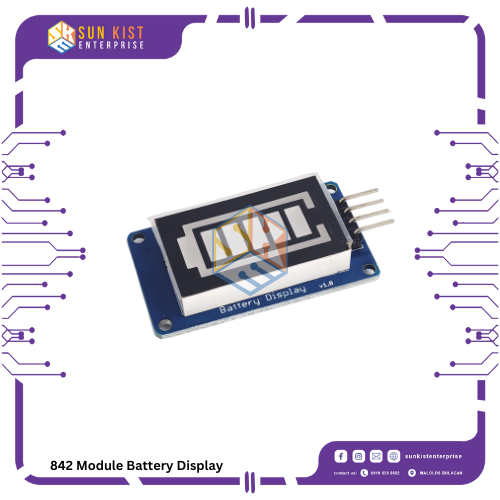Description
A “battery display module” typically refers to an electronic module or component that is used to monitor and display the status of a battery or a set of batteries. These modules are commonly employed to provide information about the voltage, capacity, and charge level of batteries in various applications. Here are some key features and information about battery display modules:
1. **Battery Status Monitoring:** Battery display modules are designed to monitor and display the status of batteries. This can include information such as the battery voltage, current capacity, charge level, and other relevant data.
2. **Battery Types:** These modules are often designed to work with specific types of batteries, such as lithium-ion (Li-ion), lithium-polymer (LiPo), lead-acid, nickel-cadmium (NiCd), or nickel-metal hydride (NiMH) batteries.
3. **Voltage Display:** One of the primary functions of a battery display module is to provide a voltage reading. This reading indicates the current voltage level of the battery, allowing you to assess whether the battery is charged or depleted.
4. **Capacity Display:** Some battery display modules can estimate the remaining capacity of the battery, which gives you an idea of how much energy is left to power your device.
5. **Charge Level:** Many modules include indicators or displays to show the charge level as a percentage or through a series of bars or LEDs. This gives a clear visual representation of the battery’s charge status.
6. **Interface:** Battery display modules may feature various interfaces, such as digital displays (e.g., LED or LCD screens), analog indicators, or communication interfaces like I2C or UART for integration with microcontrollers or embedded systems.
7. **Alarms and Alerts:** Some modules include alarms or alert features to warn users when the battery voltage falls below a certain threshold or when other battery-related conditions are met.
8. **Calibration:** Calibration may be necessary to ensure the module provides accurate readings, especially for voltage and capacity measurements.
9. **Form Factor:** The form factor and size of battery display modules can vary, from small, compact displays to larger, more elaborate screens with advanced features.
10. **Applications:** Battery display modules are used in a wide range of applications, including portable electronic devices, battery-powered projects, electric vehicles, solar power systems, and more.
11. **Customization:** Some battery display modules allow for user customization, such as setting alarm thresholds or adjusting display settings.
When working with a battery display module, it’s important to choose one that is compatible with the type of battery you are monitoring and to follow the manufacturer’s instructions for installation, calibration, and usage. These modules are valuable tools for keeping track of battery status and ensuring reliable power sources for various devices and systems.






Reviews
There are no reviews yet.